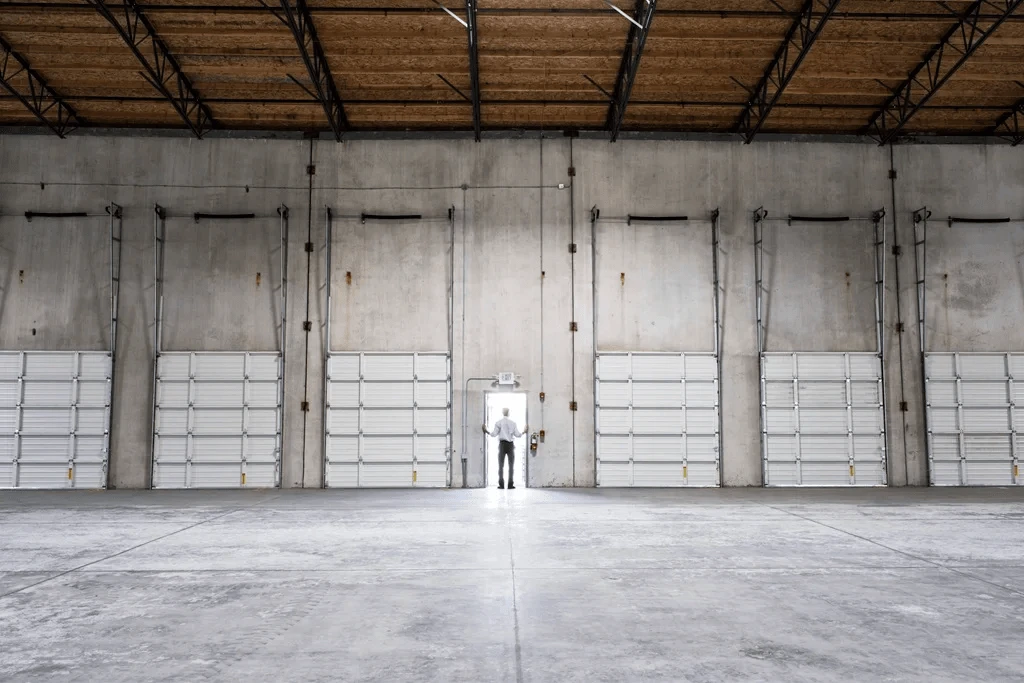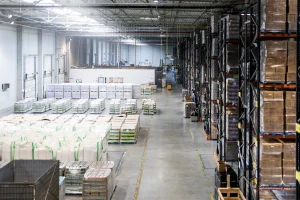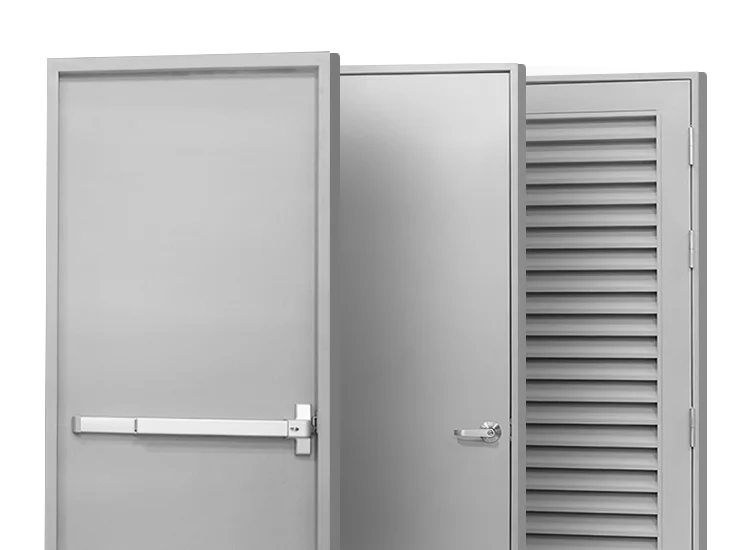Have you ever wondered why some materials in houses, office buildings, and other construction projects seem to withstand the harshest environments and even extreme weather conditions? The secret often lies in the choice of materials — and galvanized steel is a prime example.
Whether you’re a homeowner looking to enhance their space, a rental property owner focused on long-term durability, or a professional in residential construction aiming for reliable materials, you’re on the right page. In this blog post, we’ll discuss the advantages and disadvantages of galvanized steel, and why it has become an indispensable material across various sectors. Read on!
What is Galvanized Steel?
At its core, galvanized steel is simply steel that has been coated with a layer of zinc to improve its durability and resistance to corrosion. This protective zinc coating acts as a barrier between the steel and environmental elements, preventing rust and extending the material’s lifespan.
Renowned for its versatility, galvanized steel is used in a wide array of applications, from construction and infrastructure to household items. Its ability to withstand the elements makes it a popular choice for everything — from roofing and door materials to outdoor furniture. That said, it offers the perfect blend of strength and resilience, positioning it as an invaluable material for numerous uses.
What are the Methods of Galvanizing Steel?
When it comes to galvanizing steel, several key methods are used to provide the protective coating it needs to endure harsh elements. Each method has its unique advantages, depending on the application and requirements. Here’s a closer look at the primary techniques.
Hot-Dip Galvanizing
Considered the most common and widely used method, hot-dip galvanizing involves immersing steel parts into a bath of molten zinc at around 460°C (860°F). The zinc reacts with the steel to form a series of zinc-iron alloy layers, providing a robust and long-lasting protective coating. Hot-dip galvanizing is ideal for items exposed to severe weather conditions and is often used for structural steel, outdoor furniture, and fencing.
Electro-Galvanizing
This method applies a thin layer of zinc to the steel through an electrochemical process. Steel parts are submerged in a zinc-containing electrolyte solution and a current is passed through, causing zinc to deposit onto the steel’s surface.
While electro-galvanizing provides a smoother finish and better appearance, it generally offers less protection compared to hot-dip galvanizing. It’s commonly used for applications where appearance and a thinner zinc coating are more important, such as in automotive parts and appliances.
Zinc-Rich Paint
Also known as cold galvanizing, zinc-rich paints involve application by brush or spray of zinc dust combined with organic or inorganic binders. These paints contain a high percentage of zinc and can be applied to steel surfaces to offer corrosion protection.
Advantages of Galvanized Steels
Galvanized steel presents various advantages, establishing it as a popular choice for various applications. Here’s why this versatile material stands out.
Superior Corrosion Resistance
One of the primary benefits of galvanized steel is its exceptional resistance to corrosion. As mentioned, the zinc coating acts as a protective barrier, shielding the steel from moisture and environmental elements that might cause rust. This makes it ideal for outdoor and high-humidity environments, ensuring longevity and reduced maintenance costs.
Long-Lasting Durability
Thanks to its robust coating, this steel can endure harsh weather conditions and heavy wear. Whether it’s exposed to extreme temperatures, heavy rain, or salty air, the material retains its structural integrity and appearance over time, lessening the need for frequent replacements or repairs.
Cost-Effectiveness
Galvanized steel provides excellent value for money. While the initial cost might be slightly higher than untreated steel, the long-term savings on maintenance and repairs make it a cost-effective option. The extended lifespan and reduced need for upkeep offset the initial investment.
Enhanced Safety
The corrosion-resistant properties of galvanized steel contribute to the overall safety of structures. By preventing rust and deterioration, the material helps maintain the strength and stability of buildings, infrastructure, and other critical applications.
Related Post: Discovering the Advantages of Steel Doors for Residential Use

Disadvantages of Galvanized Steels
While galvanized steel offers numerous benefits, it’s also important to consider its disadvantages. Below are some of the potential drawbacks you should know.
Higher Initial Cost
Although the material is generally cost-effective in the long run, the initial cost can be higher compared to untreated steel or other materials. The galvanizing process adds to the upfront expense, which might be a concern for projects with tight budget.
Limited Thickness of Coating
The thickness of the zinc coating on the steel is somewhat limited, especially in methods such as electro-galvanizing. While this coating provides good protection, it may not be sufficient for environments with extreme corrosive conditions. In such cases, additional protective measures might be required.
Potential for Brittle Coating
In certain circumstances, for example, when exposed to prolonged high temperatures, the zinc coating on galvanized steel can become brittle. This brittleness might reduce the material’s ability to withstand impact or flexing, potentially leading to cracks in the coating.
Difficulties in Repairing the Coating
If the galvanized coating is damaged, repairing it can be challenging. While there are touch-up methods, such as using zinc-rich paints, these may not provide the same level of protection as the original coating, potentially leaving the steel vulnerable to corrosion.
What Industries Commonly Utilize Galvanized Steel?
Galvanized steel is prized for its durability and resistance to corrosion, positioning it as a go-to material across a variety of industries. Here are some of the sectors where the material is commonly utilized.
Construction Industry
Perhaps the most prominent user of galvanized steel, the construction industry relies on this material for a wide range of applications. From structural beams and supports to roofing, gutters, and facades, they provide the strength and longevity needed to ensure buildings stand the test of time. Its resistance to rust makes it perfect for outdoor structures and elements enduring various weather conditions.
Automotive Industry
In the automotive sector, galvanized steel is used extensively in the manufacturing of car bodies and frames. The zinc coating shields critical parts from corrosion, particularly in areas vulnerable to moisture, road salt, and other corrosive elements. This protection extends the life of vehicles, making them safer and more reliable over time.
Electrical and Telecommunication Industries
Galvanized steel is essential in the electrical and telecommunication industries for creating durable infrastructure. It is commonly utilized for power transmission towers, electrical conduit, cable trays, and telecommunication poles. The corrosion-resistant properties are crucial for maintaining the integrity and safety of these systems.
Agriculture Industry
Agricultural environments often involve exposure to harsh weather, chemicals, and moisture, which can lead to corrosion. Galvanized steel is widely used in the production of farming equipment, fencing, grain silos, and animal shelters. Its durability ensures that these structures and tools remain functional over long periods, even in challenging conditions.
Maritime Industry
The maritime environment is notoriously harsh on materials due to constant contact with saltwater. Galvanized steel is often used in shipbuilding, docks, and offshore platforms to prevent corrosion and extend the lifespan of structures and vessels. Its protective coating helps resist the corrosive effects of the sea, making it a reliable choice for maritime applications.

Secure Your Property with Janus Steel OPC’s Galvanized Steel Doors
As mentioned, galvanized steel plays an integral role in keeping properties secure, especially when used in doors. These doors provide exceptional corrosion resistance and durability in various environmental conditions, effectively resisting wear and ensuring long-lasting security across multiple applications.
If you’re planning to install a door or upgrade to a new one, look no further than Janus Steel OPC. We have steadily built a reputation as the top choice for durable, secure, and stylish doors and windows. Our diverse range of door types not only enhances your home’s security and appearance but also offers energy-efficient features and customizable options. This allows you to achieve the ideal blend of functionality and design while staying within your budget.
Whether you prefer plain doors, louvered designs, or those with glass features, we’ve got you covered. Explore our door collections today!





